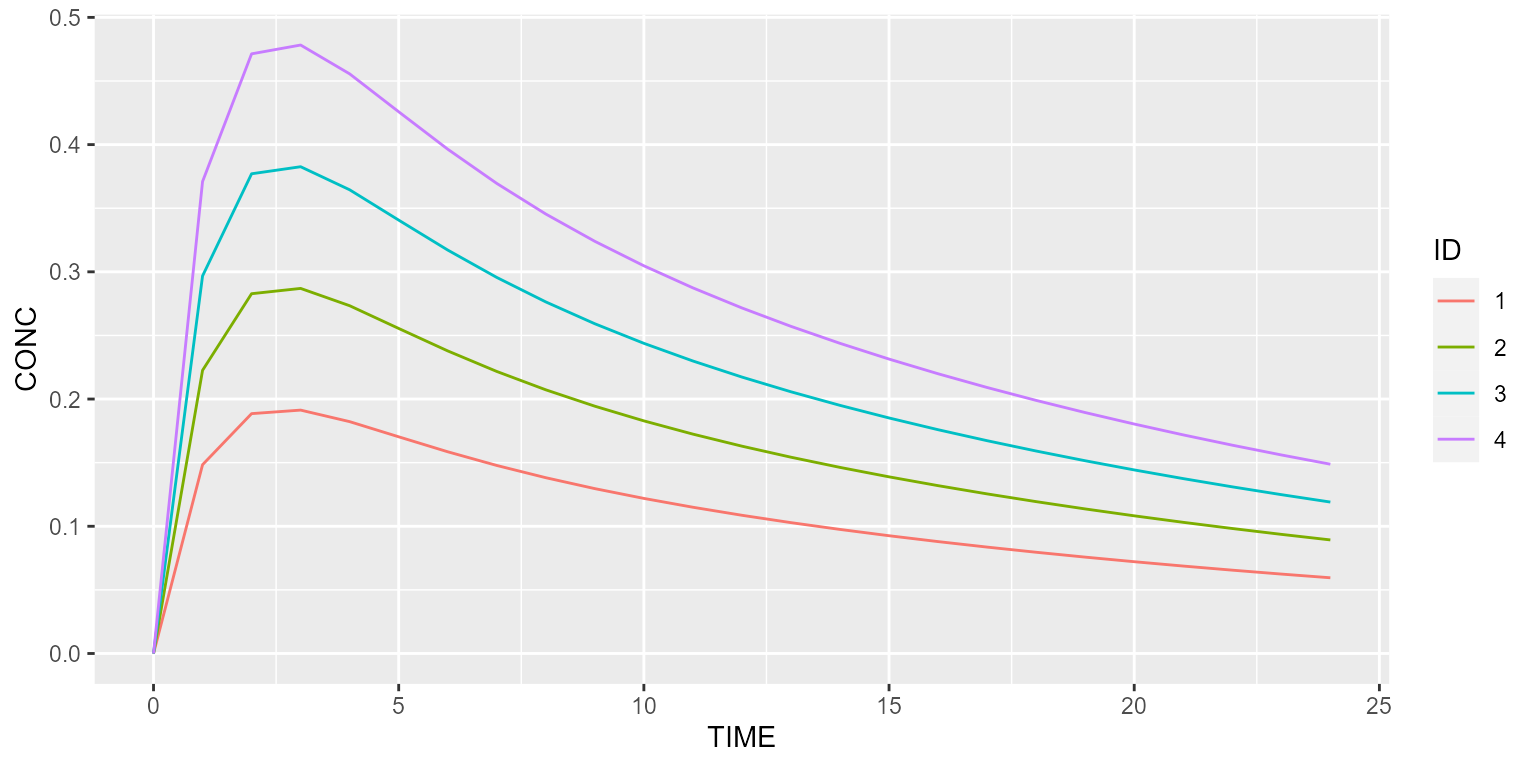This vignette shows how simple dose adaptations can be implemented.
Adapt the dose based on a covariate
Assume that your drug needs to be dosed according to the subject’s weight, for instance 0.5 mg per kg. To illustrate this, let’s use our 2-compartment PK model with absorption compartment.
model <- model_suite$nonmem$advan4_trans4We’re going to create a dataset with 4 individuals, weighing respectively 40, 60, 80 and 100 kg.
dataset <- Dataset(4) %>%
add(Bolus(time=0, amount=0.5)) %>% # 0.5mg / kg
add(Observations(times=0:24)) %>%
add(Covariate("WT", c(40, 60, 80, 100)))Our dataset is almost ready. We just have to define the dose adaptation formula. This is done as follows:
dataset <- dataset %>% add(DoseAdaptation("AMT*WT"))Let’s simulate this simple dataset. In order to check that the dose adaptation formula was well applied, we set the argument dosing to TRUE. Dosing rows will then be returned.
results <- model %>% disable("IIV") %>% simulate(dataset=dataset, dosing=TRUE, seed=1)
spaghettiPlot(results, "CONC", "ID")
Let’s now have a look at the dosing information which is returned.
results %>% dosingOnly()## # A tibble: 4 × 19
## ID EVID CMT AMT TIME ARM KA CL V2 V3 Q S2 F
## <int> <int> <int> <dbl> <dbl> <dbl> <dbl> <dbl> <dbl> <dbl> <dbl> <dbl> <dbl>
## 1 1 1 1 20 0 0 1 5 80 20 4 80 0
## 2 2 1 1 30 0 0 1 5 80 20 4 80 0
## 3 3 1 1 40 0 0 1 5 80 20 4 80 0
## 4 4 1 1 50 0 0 1 5 80 20 4 80 0
## # ℹ 6 more variables: CONC <dbl>, CONC_ERR <dbl>, A_DEPOT <dbl>,
## # A_CENTRAL <dbl>, A_PERIPHERAL <dbl>, A_OUTPUT <dbl>This looks great! The respective amounts that were given are indeed 20, 30, 40 and 50 mg!
